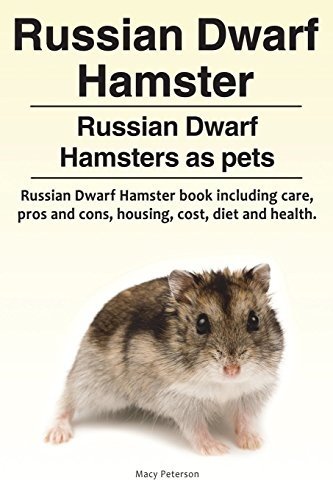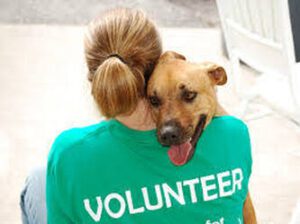Key Takeaways
-
Campbell’s Dwarf Russian hamsters are endearing pets that can be adopted through rescue groups.
-
The average cost for a Campbell’s dwarf hamster itself is relatively low, but setting up a proper habitat can be an investment.
-
These hamsters are known for their friendly demeanor, but like any pet, they need time to acclimate to new surroundings.
-
With proper care, Russian dwarf hamsters can live for an average of 2 to 3 years.
-
Adoption not only saves lives but also supports the welfare of all animals by discouraging irresponsible breeding.
Discover the Joys of Adopting a Campbell’s Dwarf Russian Hamster
Imagine a tiny, furry friend with a big personality who can bring joy and companionship into your life. That’s what you get when you adopt a Campbell’s Dwarf Russian hamster. These small rodents are not only adorable but also have a reputation for being friendly and relatively easy to care for. Adopting one through a rescue group can be a rewarding experience, giving a home to a pet in need and gaining a delightful new family member.

“Russian dwarf hamster …” from www.quora.com and used with no modifications.
Uncovering the Charm of Campbell’s Dwarf Russian Hamsters
Campbell’s Dwarf Russian hamsters are small, typically fitting in the palm of your hand. They come in a variety of colors and patterns, and their endearing nature makes them popular pets. They’re known for their playful behavior and can often be seen zipping around their cage or running on their wheel. Besides that, these hamsters are nocturnal, so they’re most active at night, which can be a fun time for interaction if you’re a night owl.
One of the best parts of adopting a Campbell’s Dwarf Russian hamster is witnessing their unique personalities unfold. With patience and gentle handling, they can become very tame, enjoying interaction with their human family. Their small size makes them a great choice for those living in apartments or homes with limited space.
Why Choose Adoption Over Purchase
When you adopt a Campbell’s Dwarf Russian hamster, you’re making a compassionate choice. Rescue groups often take in pets from situations where they were neglected or no longer wanted. By adopting, you’re giving a second chance to an animal that might otherwise have a grim future. Moreover, adoption supports the work of rescue organizations, helping them to help more animals in need.
Adoption also ensures that you’re not supporting pet mills, which often prioritize profit over the well-being of the animals. These facilities can contribute to overpopulation and may not provide the healthiest environment for their animals. By choosing adoption, you’re taking a stand against these practices and promoting responsible pet ownership.
Your Comprehensive Guide to Campbell’s Dwarf Hamster Adoption
Finding a Trustworthy Rescue Group
Start your journey to pet ownership by finding a reputable rescue group. Look for organizations that are transparent about their animals’ health, temperament, and any special needs. A good rescue will also ask you questions to ensure you’re prepared for the commitment of pet ownership. They should provide you with detailed care instructions and be available for any questions you may have after adoption.
Use online resources, ask for recommendations from friends, or check with local veterinaries to find a rescue group. Visit their facility if possible, and take note of the cleanliness, the staff’s knowledge, and the overall health of the animals. This will give you peace of mind that you’re adopting from a place that truly cares for their hamsters.
The Adoption Process: Steps You Should Expect
The adoption process can vary from one rescue group to another, but there are common steps you can anticipate. Firstly, you’ll likely need to fill out an application. This helps the rescue understand your living situation and experience with pets. You may need to provide references or agree to a home visit to ensure your home is suitable for a hamster.
After your application is approved, you’ll meet potential hamster candidates. Take your time to interact with them and see which one you connect with. Once you’ve chosen your new friend, you’ll go through the adoption paperwork and pay an adoption fee. This fee helps the rescue cover the costs of caring for the animals and supports their mission.
Understanding the Costs
While the adoption fee for a Campbell’s Dwarf Russian hamster is typically minimal, there are other costs to consider when bringing a new pet home. Setting up a proper habitat with all the necessary supplies can be a significant investment, but it’s crucial for your hamster’s health and happiness.
Here’s a breakdown of what you can expect to pay:
-
Adoption fee: Usually ranges from $10 to $30, depending on the rescue.
-
Cage: A suitable cage can cost between $30 to $100.
-
Accessories: Including a wheel, hiding places, and toys, can add up to $20-$50.
-
Bedding: Expect to spend about $10-$20 per month.
-
Food: A month’s supply of hamster food typically costs around $10.
Remember, these are initial costs, and there will be ongoing expenses for food, bedding, and any veterinary care your hamster may need. It’s important to budget for these costs to ensure you can provide for your Campbell’s Dwarf Russian hamster throughout its life.
Initial Investment: Adoption Fees and Starter Supplies
Adopting a Campbell’s Dwarf Russian hamster is just the first step. You’ll need to create a safe and comfortable environment for your new pet. The initial investment includes the adoption fee, which is relatively low, but don’t forget about the habitat and supplies. You’ll need a secure cage, a wheel for exercise, bedding for burrowing, and toys to keep your hamster entertained. Food and water dishes are essential, as well as an initial supply of food and bedding. Think of this as setting up a new home for a family member—it’s important to get it right.
Ongoing Expenses: Food, Bedding, and Veterinary Care
After the initial setup, you’ll have ongoing costs to keep your hamster happy and healthy. This includes regular purchases of food and bedding. While these expenses are not high, they are important to consider in your monthly budget. Additionally, while hamsters don’t typically require vaccinations, they may need veterinary care if they become ill or injured. Setting aside a small amount each month for potential vet visits is a smart move.
Getting to Know Your Campbell’s Dwarf Hamster
Once your hamster is settled in, you’ll start to see their personality shine through. These little creatures are known for being friendly and curious, making them delightful pets. However, they do require some time to get used to their new surroundings and human companions. Gentle and consistent handling can help build trust, and before you know it, your hamster will be eagerly awaiting your company.
It’s also important to remember that hamsters are nocturnal, so they’re most active at night. During the day, they prefer to rest and may not appreciate being disturbed. Respecting your hamster’s natural schedule will help prevent stress and ensure a harmonious relationship.
Are Campbell’s Dwarf Hamsters the Right Pet for You?
Before adopting a Campbell’s Dwarf Russian hamster, consider if they’re the right fit for your lifestyle. These small pets are generally good for people who live in smaller spaces and want a pet with lower maintenance compared to a dog or cat. However, they still require daily care and attention to thrive. Here are a few questions to ask yourself:
-
Do you have time each day to feed and interact with your hamster?
-
Are you prepared to clean the cage regularly to maintain a healthy environment?
-
Can you handle a pet that is most active during the evening and night?
-
Are you ready for the commitment of a pet that can live up to 3 years?
If you answered “yes” to these questions, a Campbell’s Dwarf Russian hamster might be a great addition to your family.
Decoding Behavior: What to Expect from Your Furry Friend
Understanding your hamster’s behavior is key to a happy coexistence. These hamsters are known for being sociable and enjoy interaction, but they also have their own language of behavior. For instance, if your hamster stuffs their cheeks with food, it’s normal hoarding behavior. If they’re nibbling on the bars of their cage, they might be bored or need more exercise. Observing and responding to these behaviors will help you provide the best care for your pet.
Care and Lifespan
Proper care is essential for keeping your hamster healthy and can even extend their lifespan. A balanced diet, clean living conditions, and regular exercise are all important. Be mindful of their sensitive respiratory systems and avoid placing their cage in drafts or direct sunlight. With love and proper care, your Campbell’s Dwarf Russian hamster can live for 2 to 3 years, sometimes even longer.
Creating a Thriving Environment for Your Hamster
Example: When setting up your hamster’s cage, use a mix of paper-based bedding and aspen shavings. Avoid pine or cedar shavings, as they can be harmful to your hamster’s respiratory system. Include a wheel for exercise, hiding places for security, and chew toys to keep their teeth in good shape.
Remember, the key to a healthy hamster is not just a proper diet but also an environment that meets their physical and psychological needs. A well-designed habitat with plenty of space to explore, burrow, and play will keep your hamster engaged and content.
It’s also crucial to clean the cage regularly—at least once a week—to prevent the buildup of harmful bacteria and odors. A clean habitat will help prevent health issues and ensure that your hamster remains a happy and active companion.
Finally, always have fresh water available. A water bottle with a metal spout is a great option, as it prevents contamination and is easy for your hamster to access.
The Lifespan of Russian Dwarf Hamsters: Factors That Matter
The lifespan of your Campbell’s Dwarf Russian hamster can be influenced by a variety of factors. Genetics play a role, but so do diet, environment, and the level of care they receive. A hamster that is well cared for, with a proper diet, clean habitat, and regular veterinary check-ups, is more likely to reach the upper end of the average lifespan. Discover more about how to enrich your hamster’s life with these hamster enrichment DIY ideas.
It’s important to remember that even with the best care, sometimes hamsters can fall ill. Being observant and catching signs of illness early can make a significant difference. Common health issues include dental problems, respiratory infections, and tumors. Regularly handling your hamster can help you notice any changes in their condition so you can seek veterinary care promptly.
Frequently Asked Questions (FAQ)
How Much Space Does a Campbell’s Dwarf Russian Hamster Need?
When it comes to space, think bigger than you might initially assume for such a small creature. A Campbell’s Dwarf Russian hamster should have a cage that’s at least 24 inches long, 12 inches wide, and 12 inches tall. This gives them enough room to exercise, explore, and establish separate areas for sleeping, eating, and doing their business. An enclosure that’s too small can lead to stress, which can manifest in various health issues and undesirable behaviors like bar chewing or aggression.
How Often Should I Feed My Campbell’s Dwarf Russian Hamster?
Feeding your Campbell’s Dwarf Russian hamster is pretty straightforward. They should have a constant supply of a balanced hamster mix, which you can find at any pet store. Supplement this with small amounts of fresh vegetables or fruits two to three times a week. But be careful with the portions; hamsters are prone to diabetes, especially the Campbell’s variety. Fresh water should always be available and changed daily to ensure your hamster stays hydrated and healthy.
Can Campbell’s Dwarf Hamsters Live with Other Hamsters?
It’s a common misconception that all hamsters enjoy company. While some Campbell’s Dwarf Russian hamsters can live with others of their kind, it’s not always the case. Introducing hamsters to each other must be done carefully, and even then, it might not work out. They can become territorial and may fight, sometimes seriously. If you’re considering a pair, it’s best to adopt two that have already been housed together successfully. Always monitor their interactions and have a backup plan in case they need to be separated.
Do Campbell’s Dwarf Russian Hamsters Require Regular Vet Visits?
While Campbell’s Dwarf Russian hamsters don’t need vaccinations, regular health check-ups are still a good idea. Annual visits to a vet with experience in small pets can help catch any potential health issues early. Pay attention to any changes in behavior or appearance, as these can be signs of illness. If your hamster starts to act unusually or shows symptoms like wetness around the tail, wheezing, or hair loss, it’s time to visit the vet.
What Are the Signs of a Healthy Campbell’s Dwarf Russian Hamster?
A healthy Campbell’s Dwarf Russian hamster is active, especially during the evening and night. They should have a good appetite and be interested in their surroundings. Their coat should be clean and well-groomed, and their eyes bright and clear. Watch for a rounded body shape (without being overweight), and check that there’s no diarrhea or wetness around their tail, which could indicate a health issue. Regular, gentle handling can help you spot any lumps, bumps, or injuries that may require a vet’s attention.


